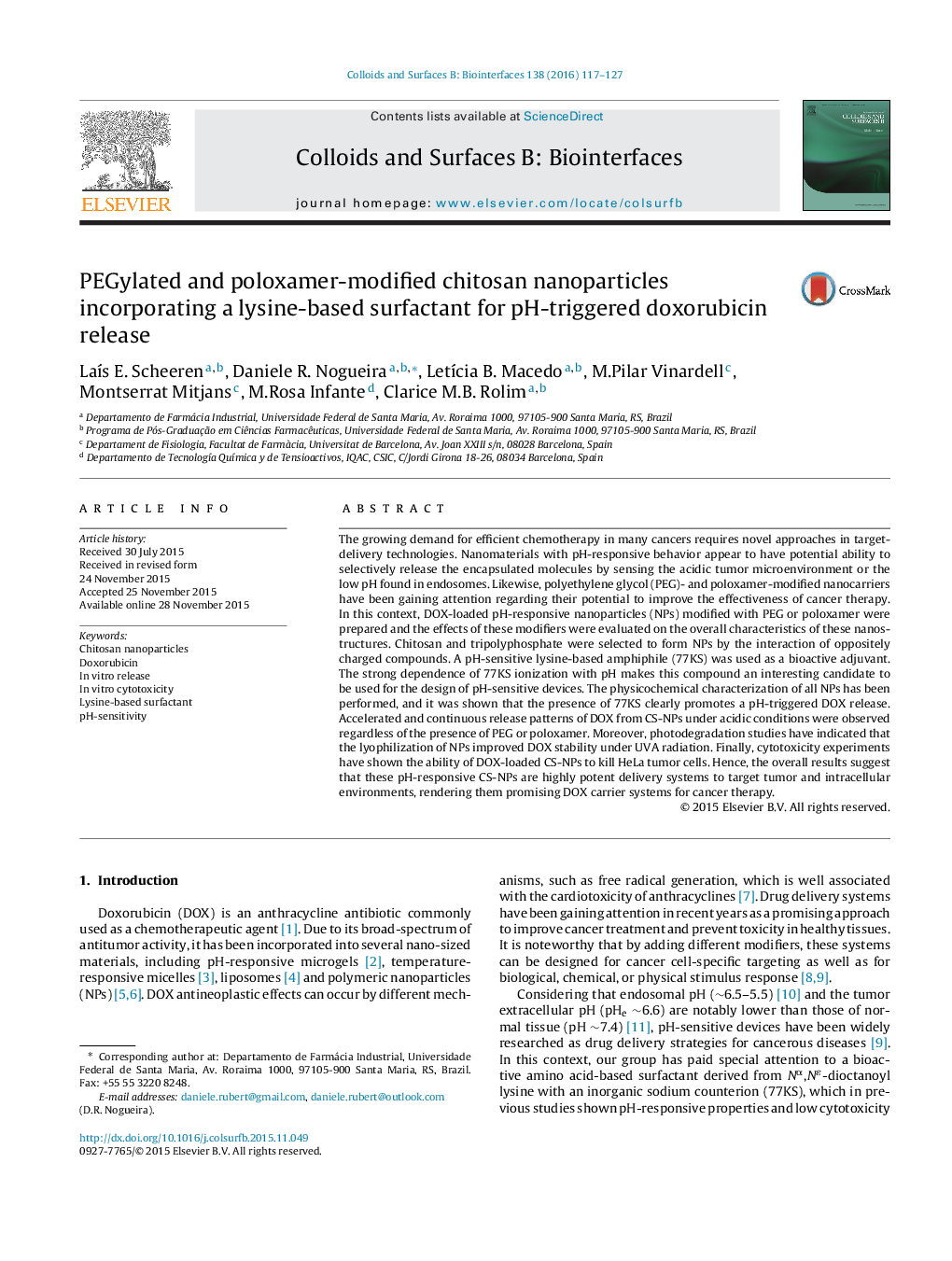| کد مقاله | کد نشریه | سال انتشار | مقاله انگلیسی | نسخه تمام متن |
|---|---|---|---|---|
| 599166 | 1454266 | 2016 | 11 صفحه PDF | دانلود رایگان |

• pH-responsive doxorubicin (DOX)-loaded chitosan-NPs were designed for tumor target.
• A pH-sensitive lysine-based surfactant was used as a bioactive adjuvant.
• PEG and poloxamer were proposed as NP modifiers.
• Both modified and unmodified chitosan-NPs promoted a pH-triggered DOX release.
• The ability of DOX-loaded chitosan-NPs to decrease HeLa cell viability was evident.
The growing demand for efficient chemotherapy in many cancers requires novel approaches in target-delivery technologies. Nanomaterials with pH-responsive behavior appear to have potential ability to selectively release the encapsulated molecules by sensing the acidic tumor microenvironment or the low pH found in endosomes. Likewise, polyethylene glycol (PEG)- and poloxamer-modified nanocarriers have been gaining attention regarding their potential to improve the effectiveness of cancer therapy. In this context, DOX-loaded pH-responsive nanoparticles (NPs) modified with PEG or poloxamer were prepared and the effects of these modifiers were evaluated on the overall characteristics of these nanostructures. Chitosan and tripolyphosphate were selected to form NPs by the interaction of oppositely charged compounds. A pH-sensitive lysine-based amphiphile (77KS) was used as a bioactive adjuvant. The strong dependence of 77KS ionization with pH makes this compound an interesting candidate to be used for the design of pH-sensitive devices. The physicochemical characterization of all NPs has been performed, and it was shown that the presence of 77KS clearly promotes a pH-triggered DOX release. Accelerated and continuous release patterns of DOX from CS-NPs under acidic conditions were observed regardless of the presence of PEG or poloxamer. Moreover, photodegradation studies have indicated that the lyophilization of NPs improved DOX stability under UVA radiation. Finally, cytotoxicity experiments have shown the ability of DOX-loaded CS-NPs to kill HeLa tumor cells. Hence, the overall results suggest that these pH-responsive CS-NPs are highly potent delivery systems to target tumor and intracellular environments, rendering them promising DOX carrier systems for cancer therapy.
Figure optionsDownload as PowerPoint slide
Journal: Colloids and Surfaces B: Biointerfaces - Volume 138, 1 February 2016, Pages 117–127